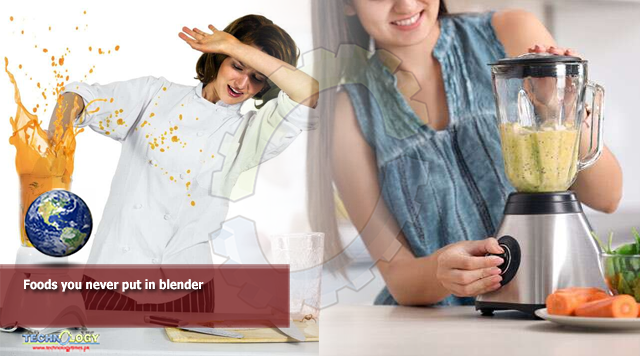Blender are super easy to use and come handy for prep work for a variety of dishes like soups, smoothies, milkshakes, and more.

However, be careful when using this multi-talented appliance because it has its limits! Before you pop everything into your kitchen blender and get pulsing, read this list of foods to avoid blending to prevent damage to the blades and container, and exploding lids and messes.
Steaming Hot Foods And Liquids
Whether it’s freshly roasted tomatoes that you want to puree or hot coffee that you want to froth, refrain from putting steaming hot foods and liquids in your blender and pulsing them. This is becoming pureeing hot foods can cause steam to build up, which can lead to the lid blowing off. This can not just turn your kitchen into a mess, but you also risk scalding yourself.
Frozen Foods
At the opposite end of the spectrum, we have frozen foods on the list of items to not put in your kitchen blender. Frozen foods are particularly hard, and if used in your blender without thawing, can damage the spinning blades and also scratch the inside of the container or cause it to crack.
Use ice cubes in your blender with caution; avoid if the instructions manual isn’t clear.
Fibrous And Starchy Vegetables
Raw fibrous foods just won’t get pureed evenly in a kitchen blender. As such, for foods like broccoli, celery, beans, etc., always cook before pulsing.
Starchy vegetables and foods like boiled potato are not the right match with a kitchen blender. If you want to mash potatoes, use a masher, the traditional way for the pillowy texture.
Also, remember that dried fruits like prunes and raisins are sticky and won’t blend right, apart from sticking to the blades and being difficult to clean. For making cauliflower rice, a food processor is your best bet, not your kitchen blender.
Originally published at Femina